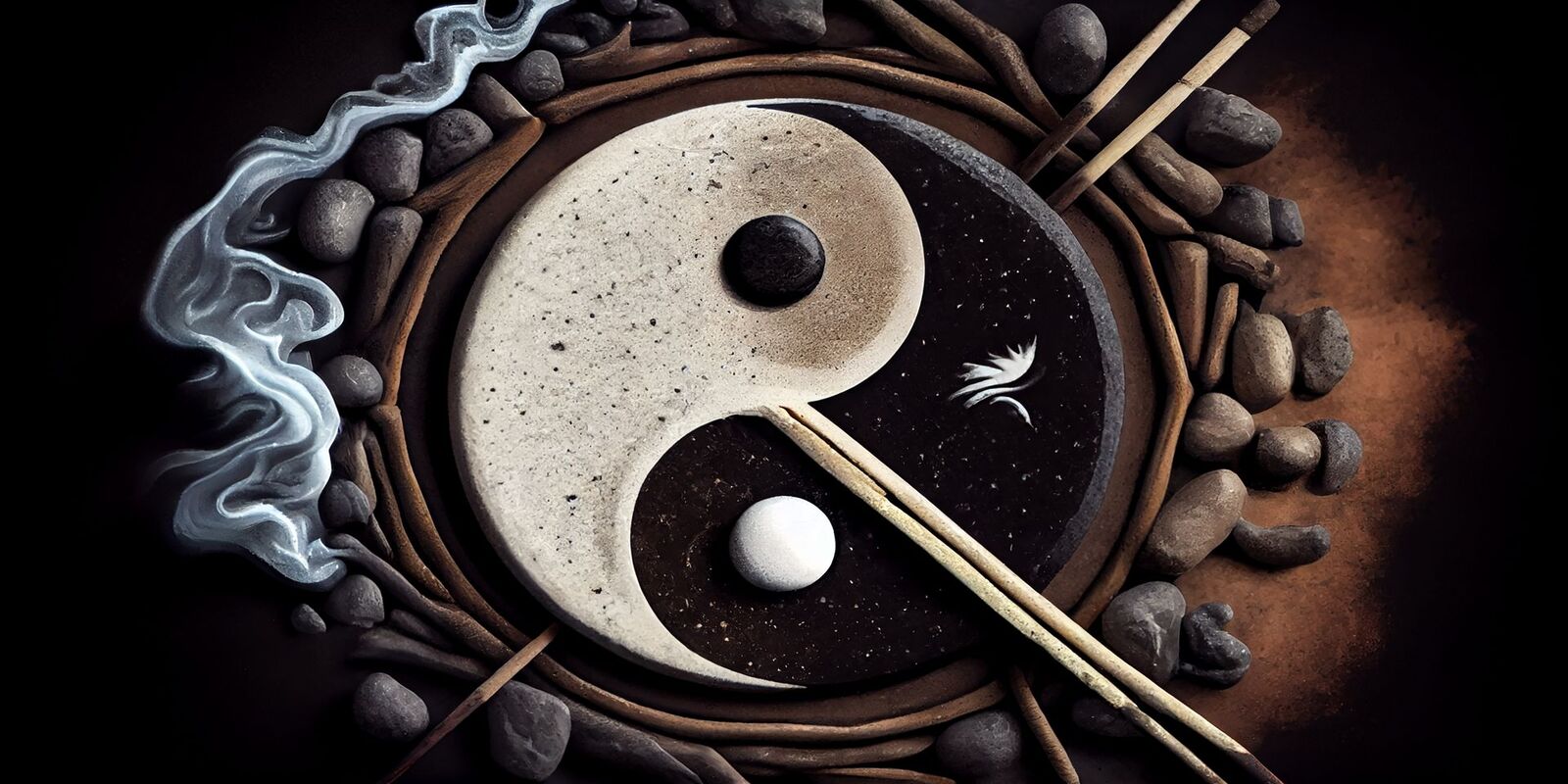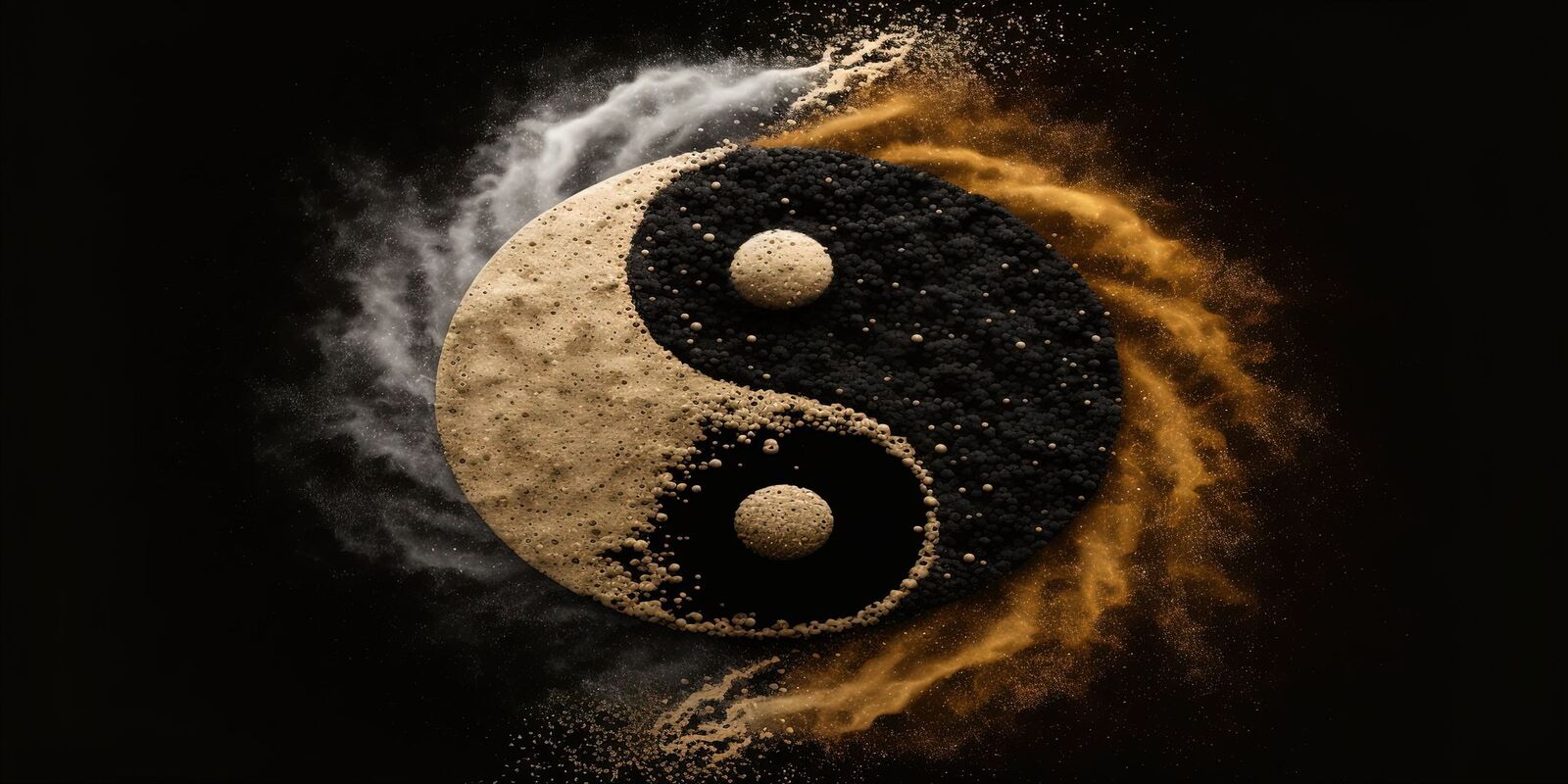Understanding Yin and Yang: The Foundation of Chinese Philosophy
Yin and Yang represent two opposing yet interconnected forces that shape the foundation of Chinese philosophy. These principles influence everything, from medicine and martial arts to cosmology and daily life. Rooted in ancient wisdom, Yin symbolizes darkness, femininity, and passivity, while Yang embodies light, masculinity, and activity. Together, they illustrate balance, showing that all things exist in a constant state of flux.
Despite their origins in early Chinese thought, Yin and Yang remain highly relevant today. Their influence extends into modern science, holistic health, psychology, and even business strategies. Understanding these forces helps us recognize harmony in nature, relationships, and personal well-being. This article explores the deeper meaning of Yin and Yang, how they shape perspectives, and why their relevance persists in today’s fast-paced world.
Genesis of Yin and Yang
The concept of Yin and Yang originates from ancient Chinese philosophy, deeply rooted in Taoism. This belief system emphasizes that everything in the universe consists of two opposite but complementary forces. Yin represents darkness, femininity, and passivity, while Yang embodies light, masculinity, and activity. Together, they create a dynamic balance that governs the natural world.
In early Chinese civilization, Yin and Yang were used to explain natural laws, seasonal cycles, and even human emotions. Scholars observed that all things experience phases of inception, growth, maturity, decline, and renewal. This philosophy shaped many aspects of Chinese thought, influencing medicine, astronomy, martial arts, and governance. The balance between Yin and Yang became a guiding principle for health, spiritual harmony, and even technological advancements.
The widespread application of these principles laid the foundation for traditional Chinese medicine, acupuncture, and Feng Shui. Over centuries, this ideology evolved, shaping scientific discoveries and philosophical teachings that continue to impact modern life. Understanding Yin and Yang is essential to grasping the deep connection between nature, energy, and human existence.
Deciphering The Symbol
The Yin and Yang symbol, known as Taijitu, visually represents the harmony between opposing forces. This iconic symbol consists of a circle divided by a curved S-shaped line, illustrating how these energies continuously interact and transform. One half is white, symbolizing Yang, while the other is black, representing Yin.
Yang, the white portion, embodies light, energy, activity, and masculinity. It signifies warmth, expansion, and action. Yin, the black portion, represents darkness, passivity, receptivity, and femininity, embodying coolness, contraction, and stillness.
Within each half lies a small dot of the opposite color, symbolizing that within Yin, there is Yang, and within Yang, there is Yin. This reflects the idea that nothing is purely one or the other, as each contains a seed of its counterpart. The curved S-line between them emphasizes their continuous movement, showing that balance is never static but an ongoing cycle of transformation.
The Taijitu symbol extends beyond philosophy and is widely used in medicine, martial arts, and spiritual teachings. It serves as a reminder that balance in all aspects of life, whether physical, emotional, or environmental, is essential for harmony.
Significance of Yin and Yang
Yin and Yang are not abstract ideas but fundamental principles that shape reality. They exist in all aspects of life, from the natural world to human health. The sun represents Yang, radiating warmth, energy, and action. The moon embodies Yin, reflecting darkness, stillness, and receptivity. These forces oppose yet complement each other, creating a continuous cycle of balance and transformation.
In Chinese medicine, Yin and Yang serve as the foundation for understanding the human body. Yin relates to structure, including organs, blood, and bodily fluids. It governs rest, nourishment, and cooling processes. Yang controls physiological functions such as metabolism, circulation, and movement. It generates heat, energy, and activity.
The interaction between Yin and Yang influences health, guiding both diagnosis and treatment. When these forces are in harmony, the body functions optimally. An imbalance, where one force overpowers the other, can lead to illness. Traditional Chinese medicine aims to restore equilibrium using acupuncture, herbal remedies, and dietary adjustments. This approach views health as a reflection of nature’s rhythm, where maintaining balance is key to overall well-being.

The Impact In Traditional Chinese Medicine
In Traditional Chinese Medicine(TCM), Yin and Yang are fundamental to understanding health, disease, and treatment. These principles form the foundation of Huangdi Neijing, one of the earliest medical texts, which provides a detailed analysis of physiological functions and pathological changes. This ancient text explains how Yin and Yang influence the body’s internal balance and guide diagnosis and treatment.
The human body is viewed as a system of 12 meridians, each connected to a specific organ. These meridians serve as pathways for Qi, the life-force energy that sustains health. When Yin and Yang remain in harmony, Qi flows smoothly, supporting bodily functions and overall well-being. However, an imbalance in these energies disrupts the flow of Qi, leading to illness, fatigue, and emotional disturbances.
TCM treatments, such as acupuncture, herbal medicine, and dietary therapy, focus on restoring Yin-Yang equilibrium. Acupuncture stimulates specific meridian points to enhance Qi circulation, while herbal remedies target excess or deficiency in Yin or Yang. By addressing the root cause rather than just symptoms, TCM promotes long-term health and balance, reinforcing the importance of Yin and Yang in holistic healing.
Influence of Yin and Yang in Yoga
Yoga is a practice designed to unify the body, mind, and spirit, promoting balance and inner harmony. It naturally aligns with the principles of Yin and Yang, as different styles of yoga emphasize either stillness or movement, softness or strength, relaxation or activation.
Yin yoga is a slow, meditative practice that targets deep connective tissues, joints, and fascia. It encourages long-held postures, fostering patience, flexibility, and relaxation. This style embodies Yin energy, which is cooling, passive, and introspective, helping to calm the nervous system and restore balance.
Yang yoga, on the other hand, is more dynamic and physically demanding. It includes Vinyasa, Ashtanga, and Power Yoga, which focus on building strength, endurance, and flexibility. These practices generate internal heat and activate Yang energy, which is warm, active, and invigorating.
Yin-Yang yoga, sometimes called couple yoga, blends these two energies into a balanced practice. It is especially beneficial during pregnancy, where both partners can support each other, fostering harmony between relaxation and strength. This holistic approach ensures that both Yin and Yang energies are cultivated, leading to a more complete and fulfilling yoga experience.
Application of Yin and Yang in Modern Society
The principles of Yin and Yang continue to shape modern society, serving as a guide to achieving balance in daily life. This philosophy extends beyond ancient traditions and remains relevant in areas such as work-life balance, health, relationships, and mental well-being.
In today’s fast-paced world, many struggle with an excess of Yang energy, leading to burnout, stress, and exhaustion. Constant activity, competition, and stimulation create an imbalance, making it essential to embrace Yin qualities like rest, introspection, and relaxation. By recognizing these forces in daily routines, individuals can make intentional choices to restore equilibrium.
This balance is not limited to physical health but also influences mental and emotional well-being. Practices like mindfulness meditation, Tai Chi, and breathwork help regulate Yin and Yang energies, promoting inner peace and clarity. Even in business and leadership, integrating Yin qualities such as patience and adaptability with Yang traits like ambition and action leads to better decision-making and sustainable success.
By aligning with the natural rhythm of Yin and Yang, people can cultivate a harmonious lifestyle, ensuring long-term health, productivity, and fulfillment. This ancient wisdom remains a valuable tool for navigating modern challenges with balance and awareness.
Yin and Yang in Contemporary Ethics
The principles of Yin and Yang have influenced not only Eastern traditions but also Western philosophy and contemporary ethics. Scholars and ethicists recognize the value of this dualistic concept in shaping moral reasoning, decision-making, and philosophical thought.
In ethical discussions, Yin represents qualities such as compassion, patience, and receptivity, while Yang embodies assertiveness, logic, and action. A balanced ethical framework integrates both energies, promoting justice, fairness, and adaptability in complex moral dilemmas. This interplay has contributed to discussions in epistemology, philosophy of mind, and social ethics, helping to bridge gaps between individual needs and collective responsibility.
Western philosophers have acknowledged the significance of Yin and Yang in rethinking ethical structures that often rely on rigid binaries. By embracing this dynamic balance, contemporary ethics can evolve beyond absolute judgments, fostering nuanced perspectives on issues such as human rights, environmental responsibility, and social justice. This universal appeal highlights how ancient wisdom continues to shape modern ethical thought, offering valuable insights into resolving conflicts and promoting global harmony.
Relevance in Quantum Mechanics
The principles of Yin and Yang extend beyond philosophy and medicine, finding intriguing parallels in quantum mechanics. In the subatomic world, particles and antiparticles exist as complementary counterparts, mirroring the dynamic balance seen in Yin and Yang. This concept aligns with the idea that opposing forces are not only interconnected but also necessary for maintaining equilibrium.
Quantum physics reveals that particles can transform under specific conditions, just as Yin and Yang continuously shift and evolve. The relationship between wave-particle duality, where light behaves both as a wave and a particle, reflects this interplay. Similarly, quantum entanglement, where two particles remain connected regardless of distance, echoes the idea that Yin and Yang are inseparable forces.
These connections suggest that the Yin-Yang model is not just a metaphor but a possible lens for understanding duality, transformation, and balance at the quantum level. The universal applicability of these ancient principles highlights their relevance in modern scientific exploration, showing that the pursuit of knowledge often circles back to fundamental truths recognized thousands of years ago.
Yin and Yang in the Digital Age
The principles of Yin and Yang are not confined to ancient philosophy or medicine. They have found relevance in the digital age, particularly in the foundation of modern computing. The binary system, which powers all digital technology, mirrors the concept of Yin and Yang.
In computing, 0 and 1 represent two fundamental states, just as Yin and Yang symbolize opposing yet complementary forces. The interaction between these two numbers enables complex operations, much like the dynamic balance between Yin and Yang creates harmony in nature. Just as Yin embodies stillness and Yang represents activity, 0 signifies absence, and 1 represents presence, forming the basis of all digital communication, artificial intelligence, and software development.
Beyond computing, the philosophy of Yin and Yang influences cybersecurity, artificial intelligence, and even digital well-being. The balance between connectivity and privacy, automation and human oversight, or consumption and mindfulness in the digital world reflects this ancient duality. As technology advances, understanding the interplay between opposing forces remains crucial for achieving balance in an increasingly digital society.
Yin and Yang in Love and Sex
The principles of Yin and Yang play a vital role in love, relationships, and sexuality, shaping the dynamics between partners. In this philosophy, Yin represents receptivity, intuition, and emotional depth, while Yang embodies passion, strength, and assertiveness. A healthy relationship thrives when these energies are balanced, fostering mutual respect, attraction, and harmony.
In love, Yin reflects nurturing, understanding, and deep emotional connections, while Yang symbolizes excitement, desire, and action. Relationships that embrace both forces create a dynamic and fulfilling bond, where each partner contributes complementary qualities. If one energy dominates, it can lead to imbalance—excess Yang may cause dominance and conflict, while too much Yin can result in passivity and emotional distance.
In sexuality, Yin energy is associated with sensuality, slowness, and receptivity, while Yang energy fuels passion, intensity, and movement. The interplay between these energies enhances intimacy, creating a more connected and fulfilling sexual experience. Many Eastern practices, such as Tantric sex and Taoist teachings, emphasize the balance of Yin and Yang to deepen pleasure and strengthen emotional intimacy.
By understanding and embracing both energies, couples can cultivate a deeper bond, maintain passion, and nurture long-lasting intimacy. When Yin and Yang are in harmony, love and sex become not just physical experiences but profound expressions of connection and balance.

The Future of Yin and Yang
As we move into the future, one thing is certain, Yin and Yang aren’t going anywhere. These ancient principles have been around for thousands of years and honestly, they seem to be doing a better job at staying relevant than most of us on social media. From medicine to space exploration, technology to mental health, Yin and Yang continue to shape how we understand balance in an ever-changing world.
With scientific discoveries pushing the boundaries of what we know, I have no doubt that Yin and Yang will keep surprising us. Maybe one day, physicists will confirm that the universe itself is just one big swirling Taijitu, or AI will finally learn the importance of a good nap because let’s be real, it’s been running on pure Yang energy.
At the end of the day, life is all about balance. Too much work and no rest leads to burnout. Too much pizza and no salad? Well, let’s just say your body will remind you who’s boss. Yin and Yang remind us that opposites don’t just attract, they need each other to thrive. So whether we’re talking about the cosmos or just trying to get through Monday without losing our minds, these principles will always be here, helping us find a little more harmony in the chaos.


You must be logged in to post a comment.